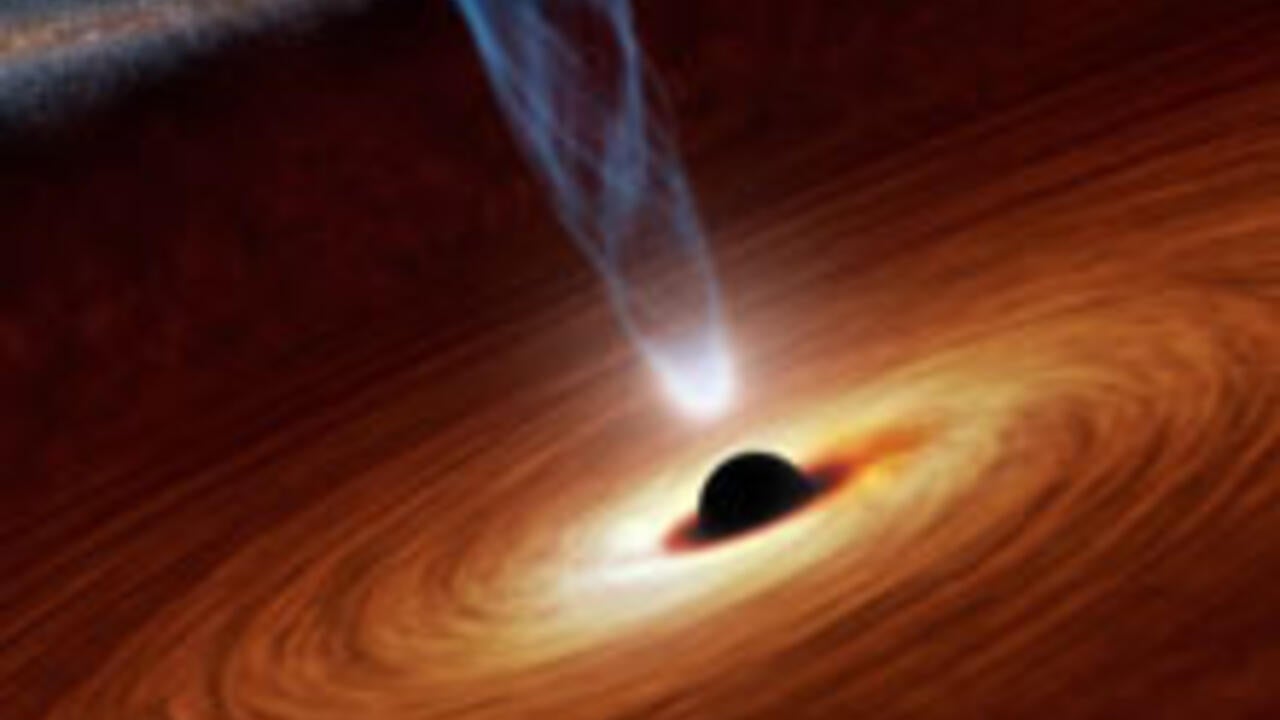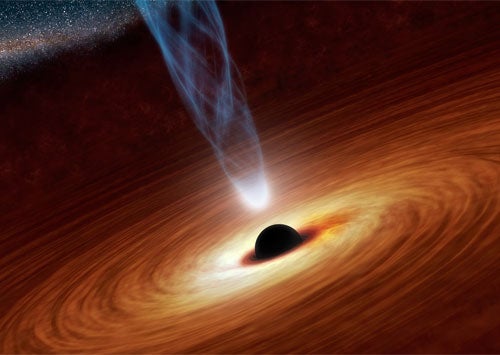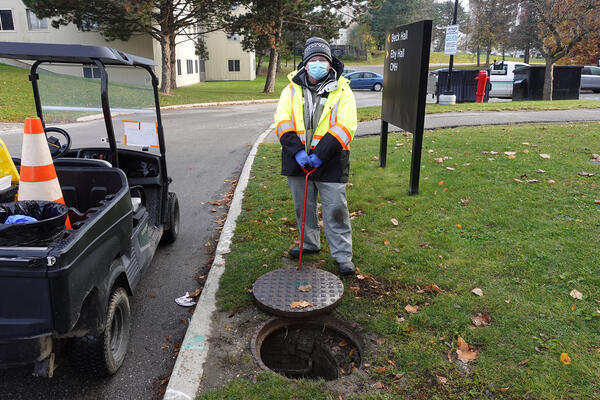
Supermassive black holes: Physicist to investigate with x-ray telescope
Waterloo scientist is part of team directing next-generation Japanese x-ray space observatory

Waterloo scientist is part of team directing next-generation Japanese x-ray space observatory
By Victoria Van Cappellen Faculty of ScienceA University of Waterloo physicist, along with two Canadian astronomers will be part of the science working group directing ASTRO-H, the Japan Aerospace Exploration Agency’s (JAXA’s) newest flagship x-ray astronomy observatory.
“This is a fantastic opportunity for Canada and Canadian astronomers,” says Brian McNamara, a professor in the Department of Physics and Astronomy who also holds a University Research Chair in Astrophysics.

This artist's concept illustrates a supermassive black hole with millions to billions times the mass of our sun. Supermassive black holes are enormously dense objects buried at the hearts of galaxies. Photo credit: NASA/JPL-Caltech
ASTRO-H marks the first time Canada is part of an x-ray astronomy mission, which is scheduled to launch in early 2016. The science working group will design the observatory’s science plan while also receiving privileged access to the proprietary data during the first year of operations. McNamara will specifically study the effects of black holes on emergent galaxies.
The telescope is designed to explore mysterious phenomena in unprecedented detail, such as black holes and their role in forming galaxies like our own Milky Way. It includes one of the most sensitive spectrometers aboard any orbiting x-ray observatory to date.
X-ray telescopes offer an advantage over visible and radio-wave telescopes in that they can detect high-energy phenomena such as the radiation emitted by super hot gases travelling in the vicinity of a black hole. The black hole’s intense gravity causes these gases to reach velocities nearly the speed of light. When that happens, the gases emit radiation in the x-ray range.
“X-ray telescopes are the perfect black hole detectors,” says McNamara.
McNamara will be looking specifically at the speeds these gases are travelling to understand the energy generated by some of the most massive black holes in existence, including the one at the centre of our galaxy.
The vast majority of mass that accelerates towards a black hole is expelled back into space. The power needed to do this is enormous and may govern how galaxies form. According to McNamara, this x-ray telescope will allow us to observe this energy emission directly.
“Black holes are the most efficient power generators in the Universe,” said McNamara. “In fact, we think they [black holes] exist in the centres of all massive galaxies.”
Canada’s scientific participation was arranged in return for the Canadian Space Agency (CSA) providing the critical Canadian ASTRO-H Metrology system (CAMS), an innovative measurement system for the observatory’s hard x-ray telescopes.
Joining McNamara are astronomers Dr. Luigi Gallo of Saint Mary’s University, who will lead Canada’s science team, and Dr. Samar Safi Harb of the University of Manitoba.
McNamara is also an affiliate member of the Perimeter Institute and Director of the Guelph-Waterloo Physics Institute.

Read more
The renowned leaders in developmental psychology, data intelligence and quantum physics receive prestigious appointments and funding to establish research programs

Read more
Optometry professor Dr. Lyndon Jones a key member of team winning Brockhouse Canada Prize for Interdisciplinary Research in Science and Engineering

Read more
Professor Servos has been leading wastewater testing locally and across Canada
The University of Waterloo acknowledges that much of our work takes place on the traditional territory of the Neutral, Anishinaabeg and Haudenosaunee peoples. Our main campus is situated on the Haldimand Tract, the land granted to the Six Nations that includes six miles on each side of the Grand River. Our active work toward reconciliation takes place across our campuses through research, learning, teaching, and community building, and is co-ordinated within the Office of Indigenous Relations.